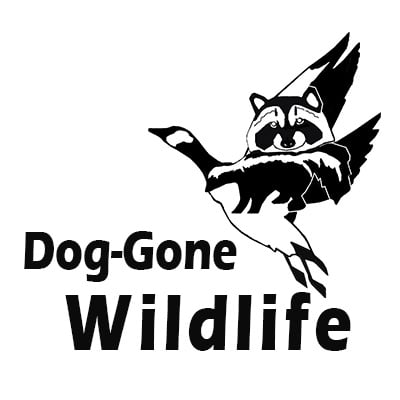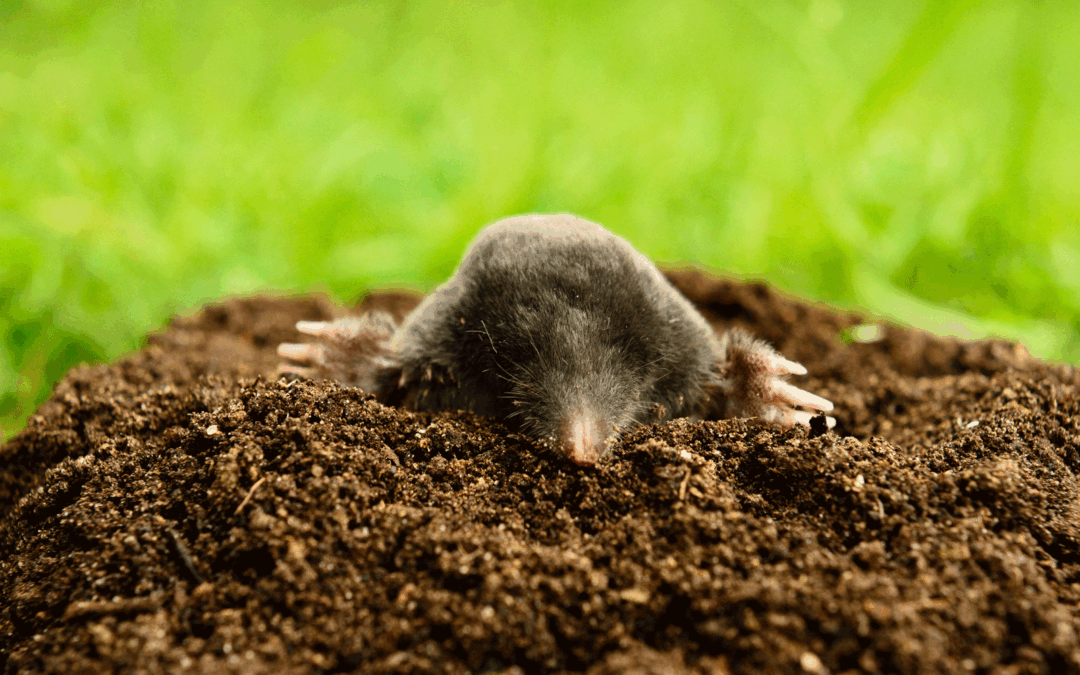Summer in Ohio brings plenty of sunshine, and with it, the challenge of keeping your lawn healthy and green. But what happens when your once-lush yard suddenly looks torn up, uneven, or patchy? Most property owners immediately suspect drought, overwatering, or a lawn disease. But there’s another culprit you might not expect: moles.
At Dog Gone Wildlife, we often get calls from homeowners and business owners convinced their grass is suffering from heat stress only to discover a network of tunnels just beneath the surface. In this post, we’ll help you identify the signs of mole activity, explain how it differs from other lawn issues, and tell you what to do next.
Is It Heat Stress or Mole Damage? Key Differences to Watch For
Many lawn problems can look alike at first glance. Here’s how to tell whether you’re dealing with weather-related stress or an underground pest problem:
Surface Tunnels and Raised Ridges
Mole Damage: Moles create shallow tunnels just under the soil, which often result in raised, squishy ridges and disturbed earth. These are especially noticeable after watering or rainfall.
Heat Stress: Grass affected by heat stress typically appears dry, brittle, and discolored, but the ground remains flat and compact.
Small Mounds of Dirt (Molehills)
Mole Damage: You may see conical mounds of loose soil where moles have pushed up dirt while creating deeper tunnels.
Drought or Disease: Neither drought nor fungal lawn diseases result in piles of soil or raised dirt patches.
Isolated Dead Spots
Mole Damage: Patches of grass may die off due to root disruption beneath the surface from tunneling activity. These patches often follow the path of tunnels.
Other Causes: Fungal diseases tend to create irregular or ring-like patterns of dead grass, while drought affects larger, more uniform areas.
Soft or Spongy Ground
Mole Damage: If your lawn feels soft or spongy in spots, it could be due to underground tunneling.
Water Stress: Overwatered lawns can also feel soft but won’t typically show raised trails or mounds.
Why Moles Are More Active in Summer
You might think moles would hibernate during the summer heat but that’s not the case. Moles become more active in the summer as they search for insects and grubs that thrive in warm, moist soil. If you irrigate your lawn or have flower beds, your yard becomes prime real estate for hungry moles.
The Cost of Ignoring Mole Damage
Moles don’t just make your lawn look bad, they can cause long-term damage:
- Disrupt root systems, leading to the death of grass and plants
- Create trip hazards in commercial or high-traffic areas
- Attract predators like foxes or skunks, who dig up more of your yard in search of moles
- Degrade property value and curb appeal, especially for businesses and HOAs
What to Do if You Suspect Moles
If you think moles are ruining your lawn, don’t waste time or money on ineffective DIY methods. Home remedies like castor oil, chewing gum, or solar spikes rarely offer lasting results. Here’s what you should do instead:
Call a Professional Wildlife Control Expert
At Dog Gone Wildlife, we specialize in humane and effective mole removal for homeowners and commercial properties across the Columbus, Ohio area.
We will:
- Inspect your property to confirm mole activity and identify active tunnels
- Develop a removal strategy tailored to your lawn and level of infestation
- Provide long-term solutions, including prevention tips and habitat modification
Protect Your Lawn This Summer with Dog Gone Wildlife
Don’t let mole damage go unnoticed, or worse, misdiagnosed. If your lawn is looking rough despite proper watering and care, it’s time to take a closer look at what’s happening below the surface.
Dog Gone Wildlife offers trusted mole removal services in Columbus, Westerville, Powell, Upper Arlington, and surrounding areas. We’re available to help protect your yard and restore your peace of mind.
Contact us today to schedule an inspection and get ahead of summer mole problems, before they tunnel out of control!

